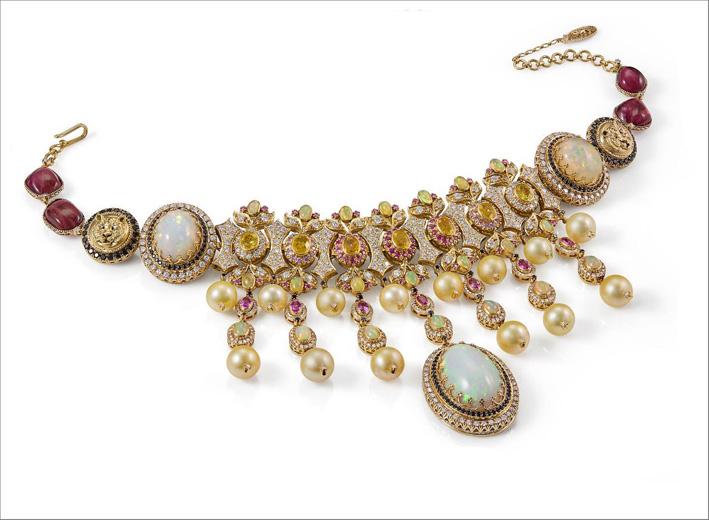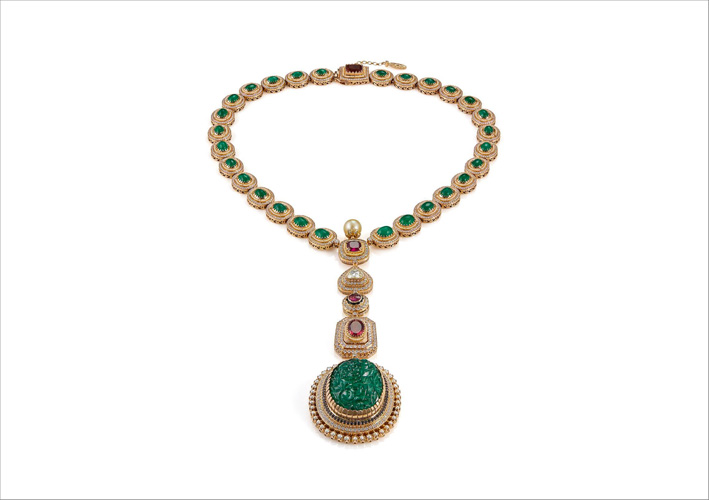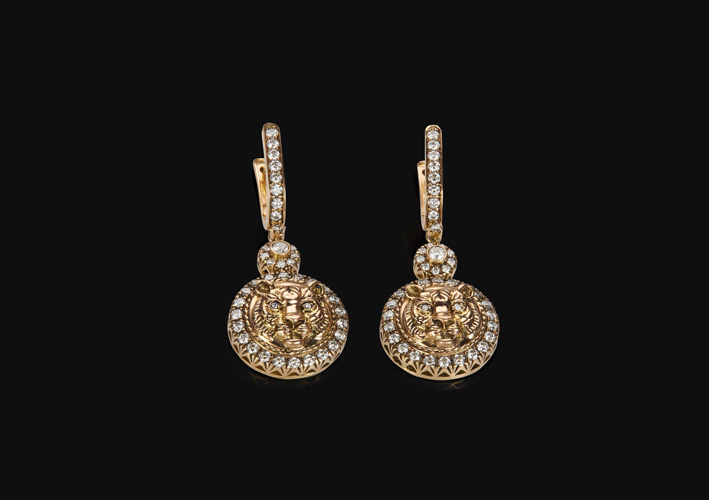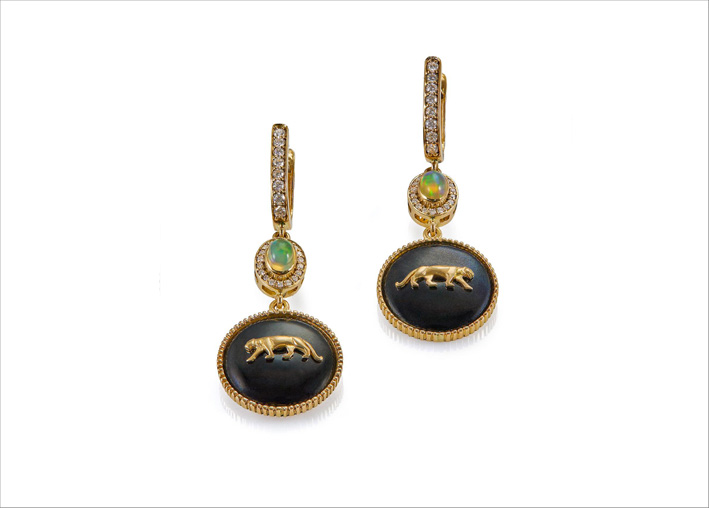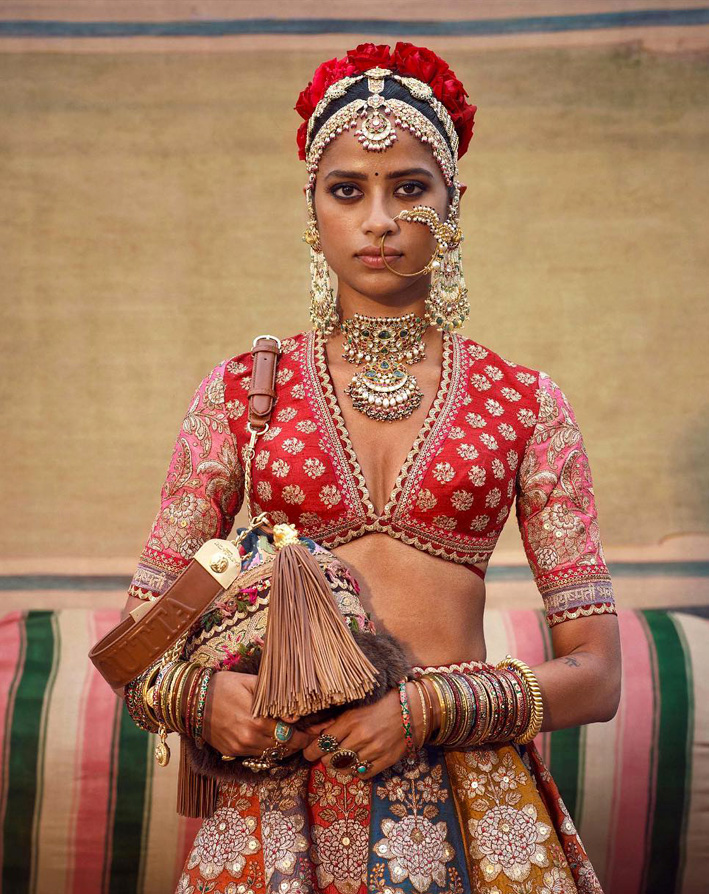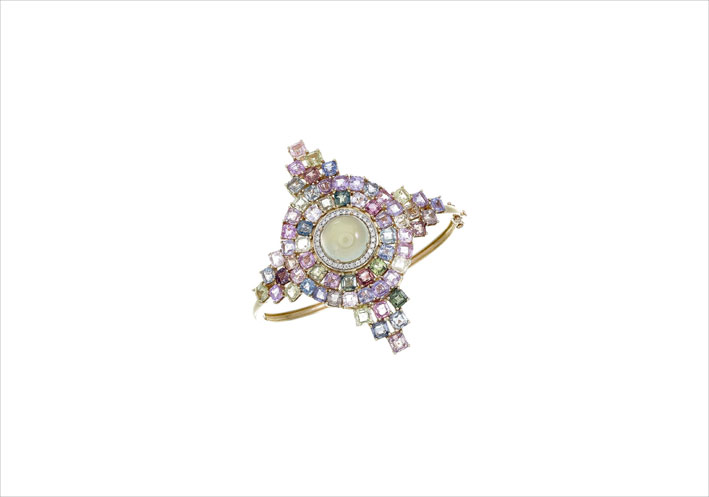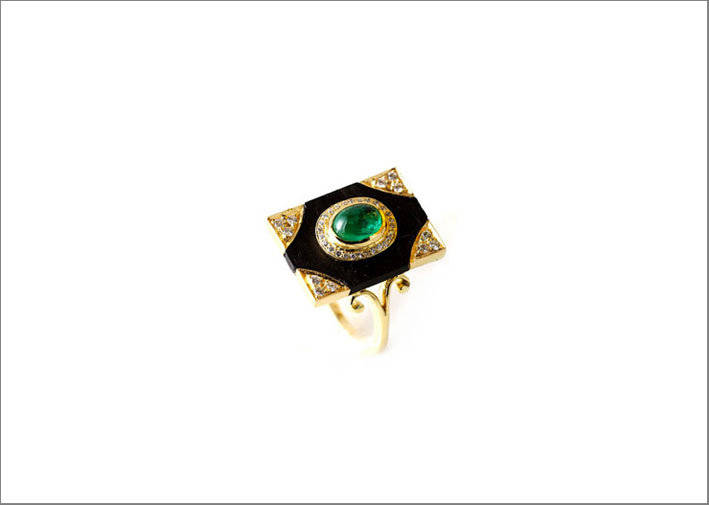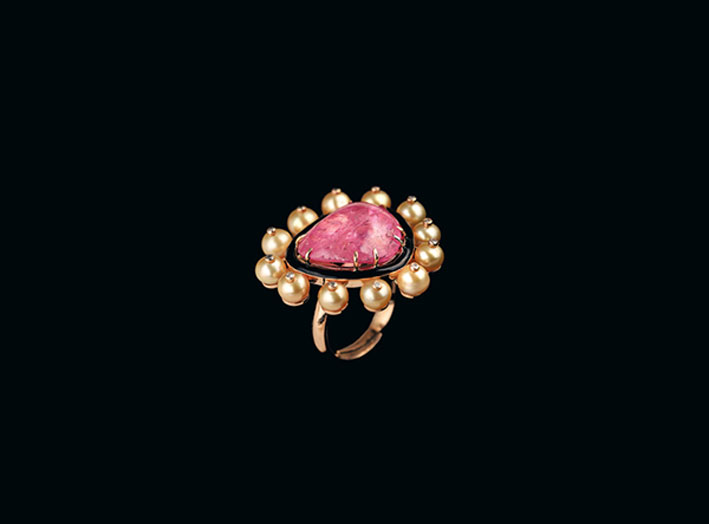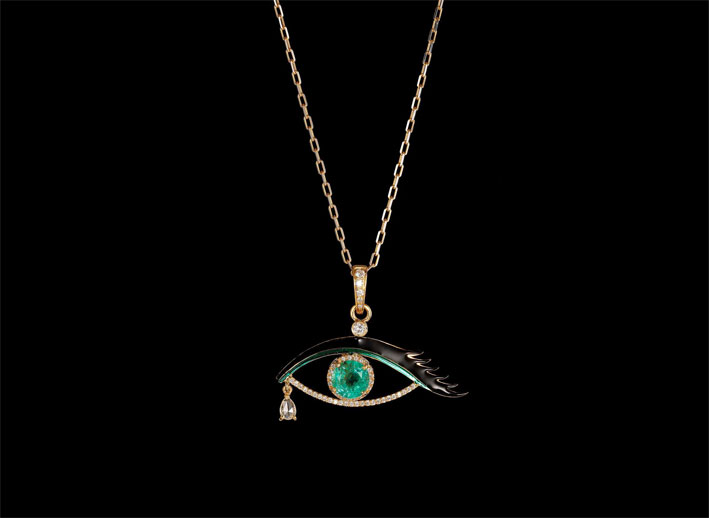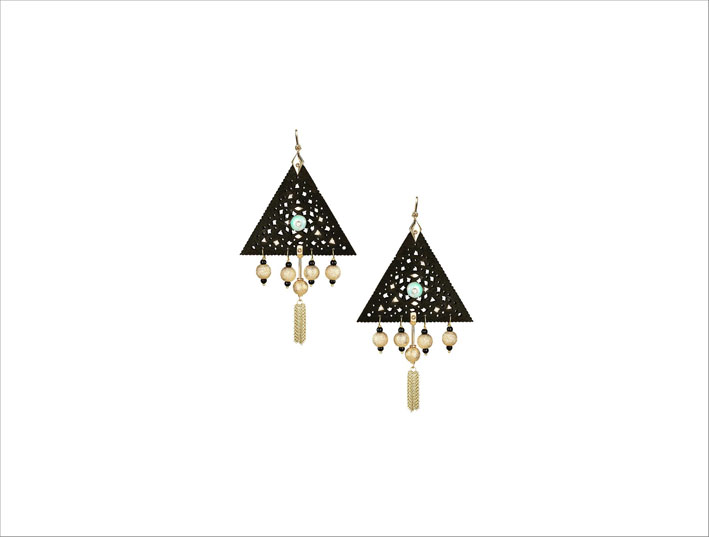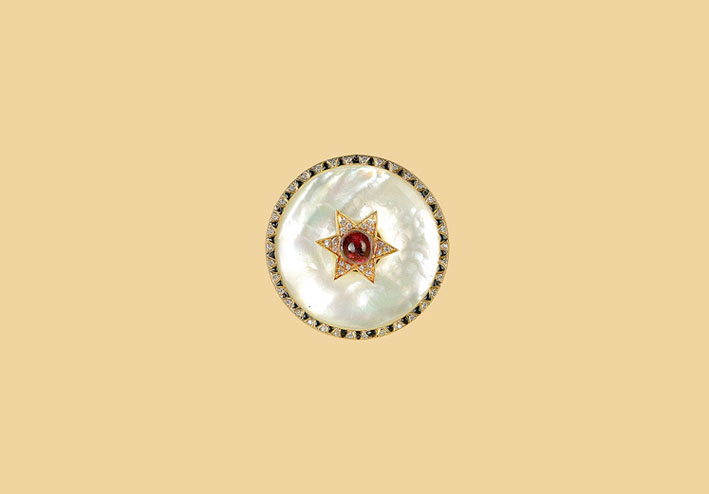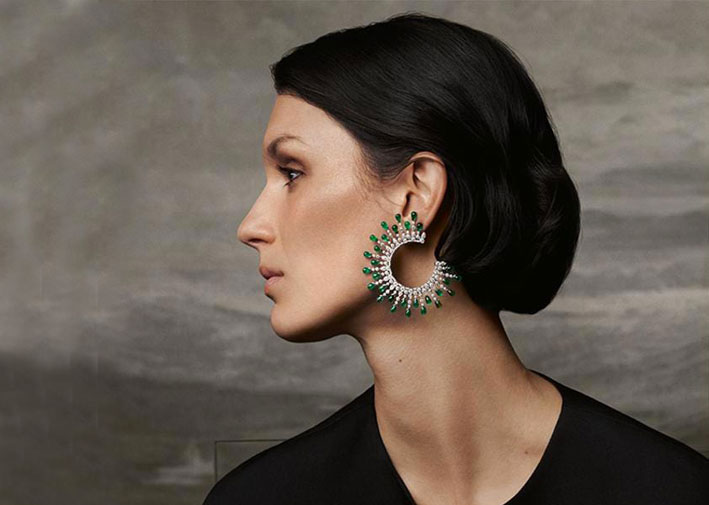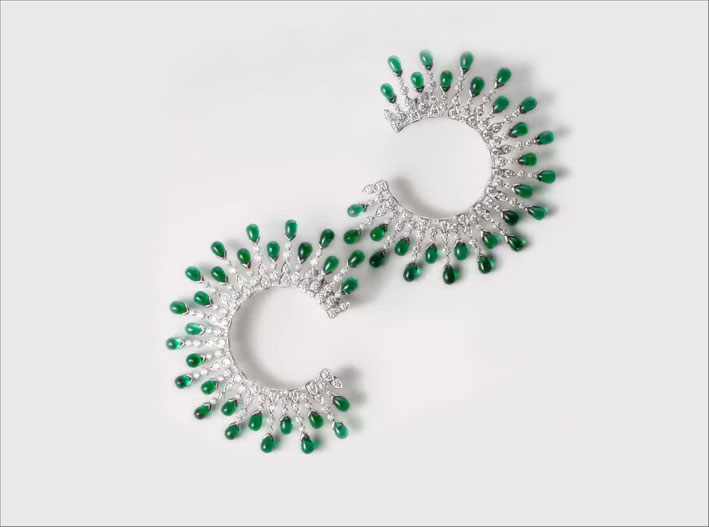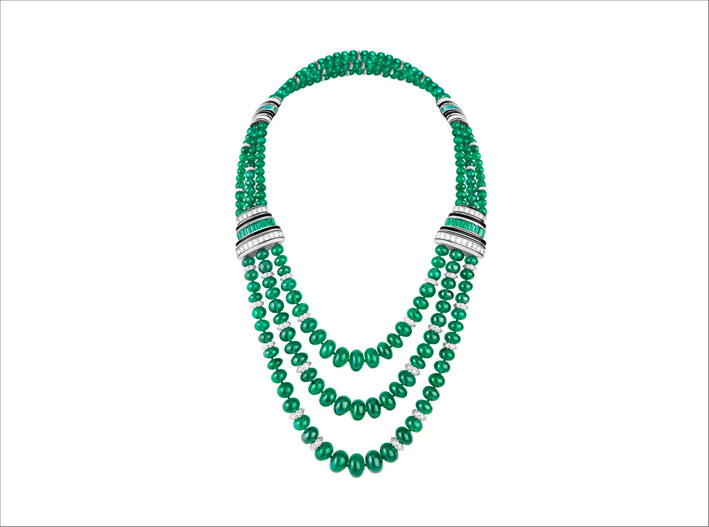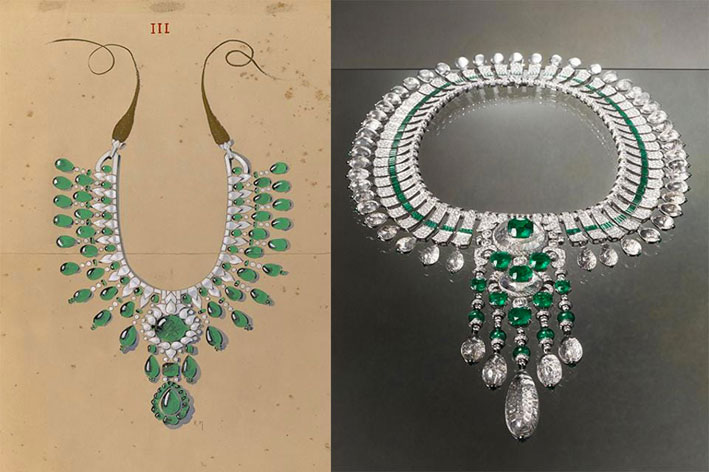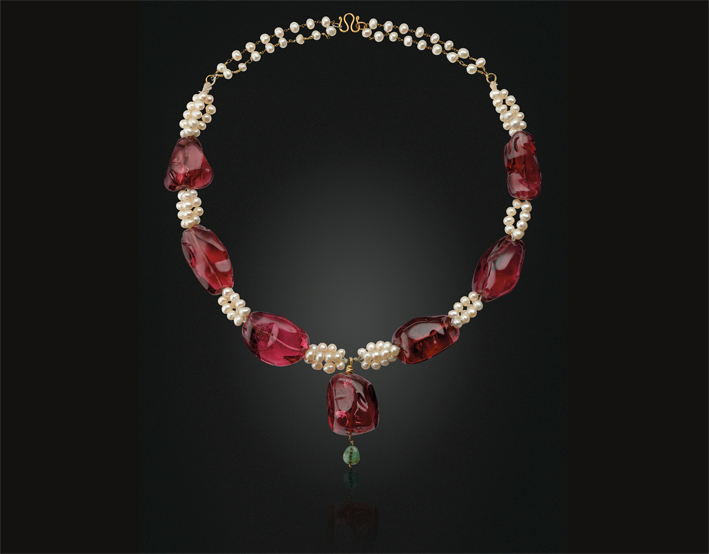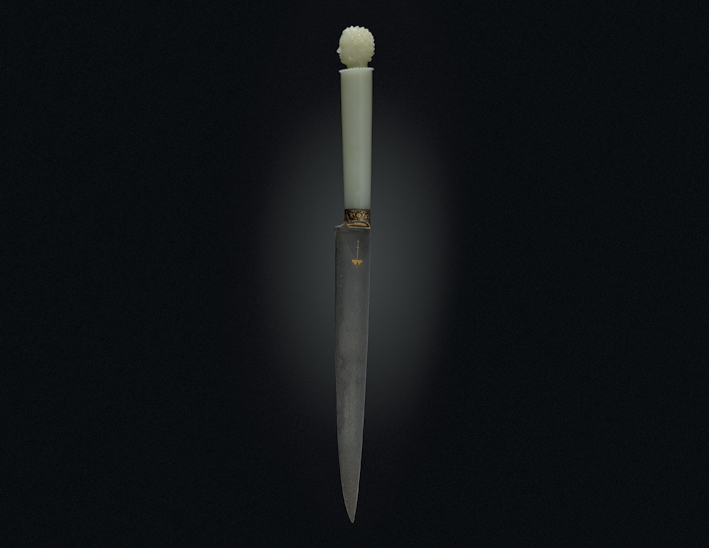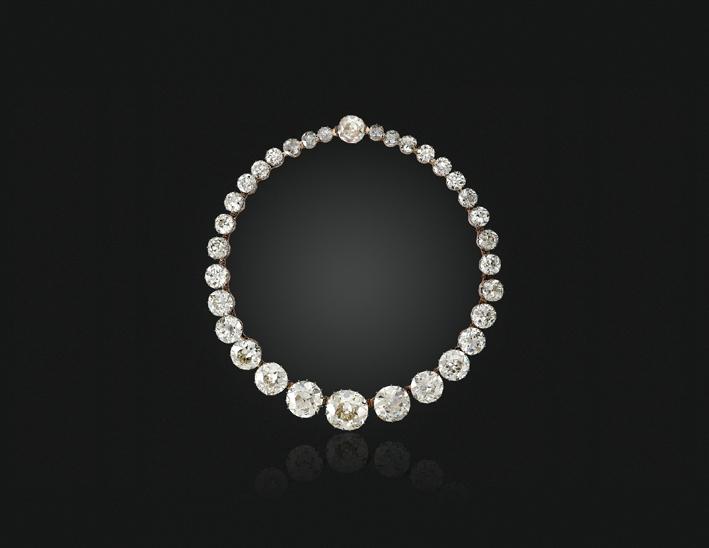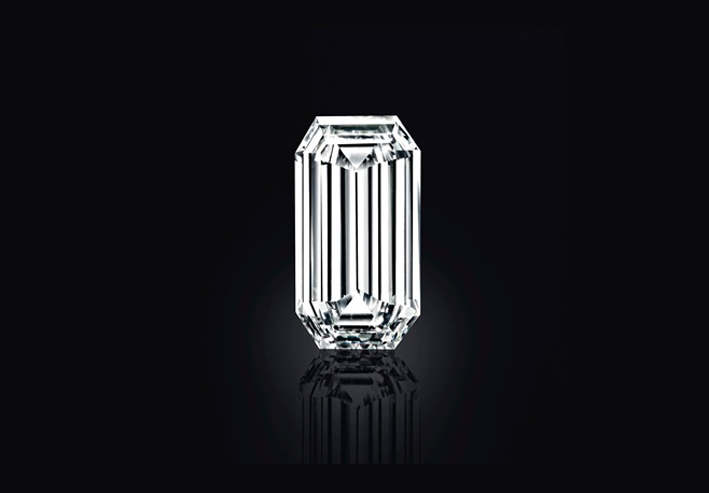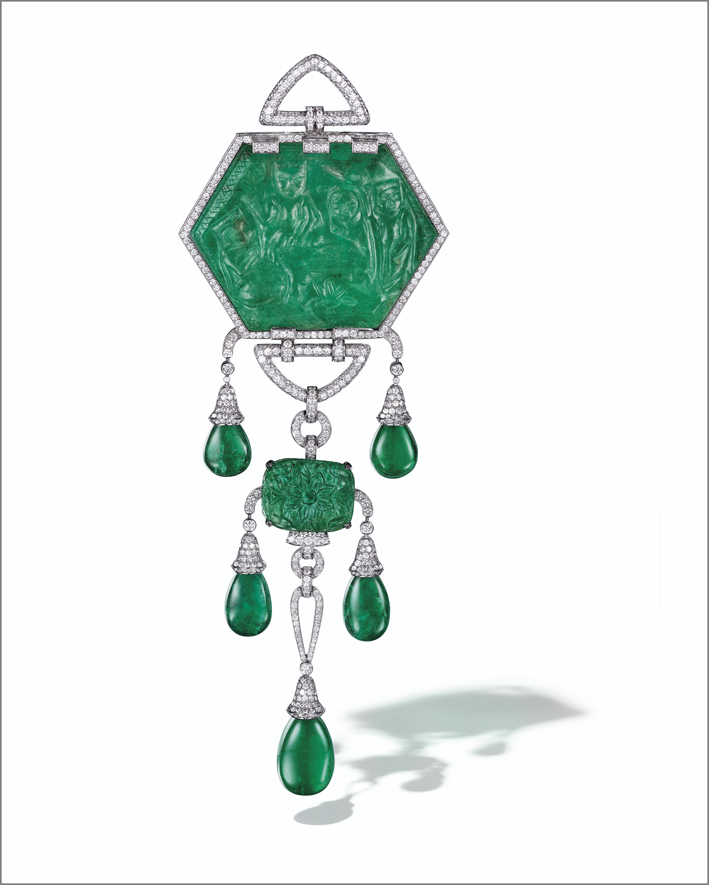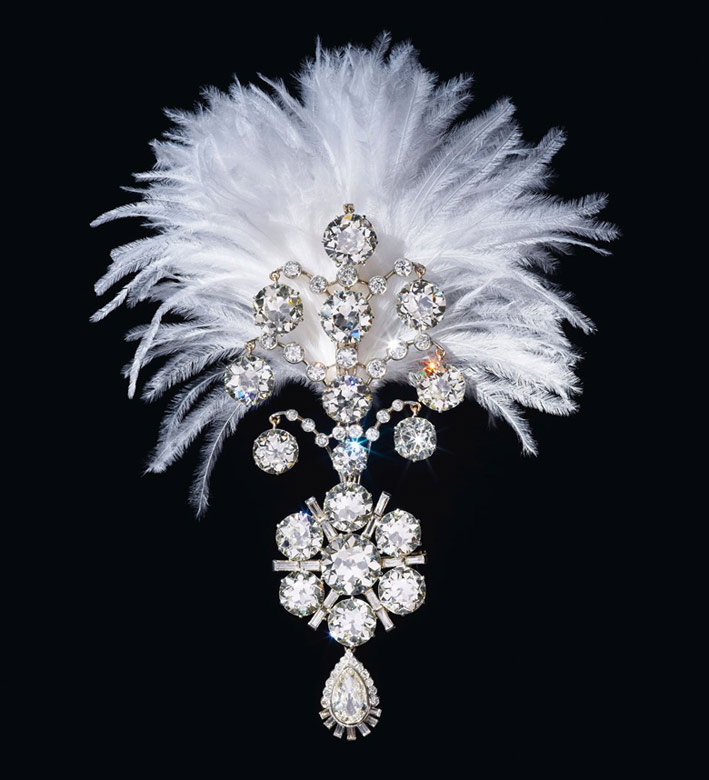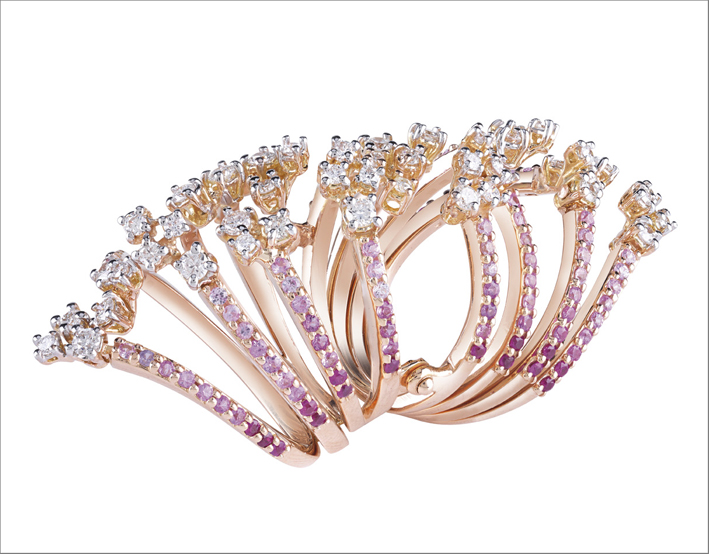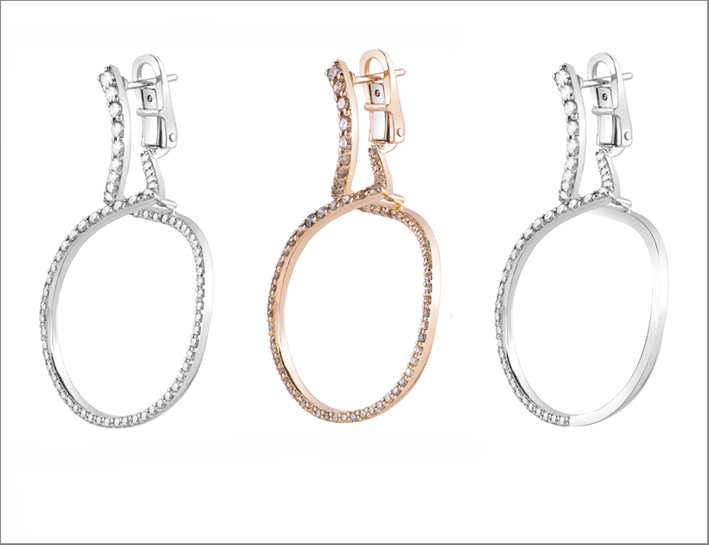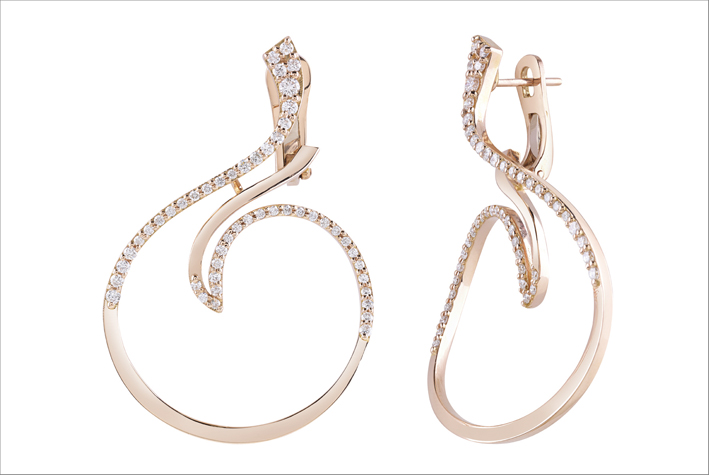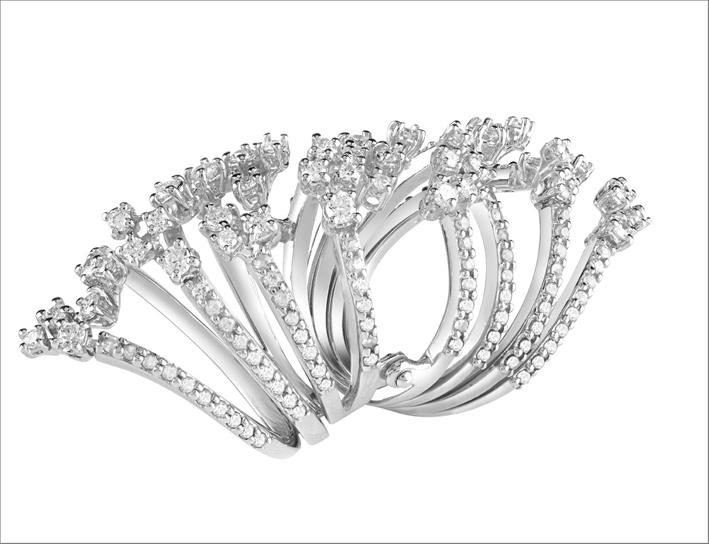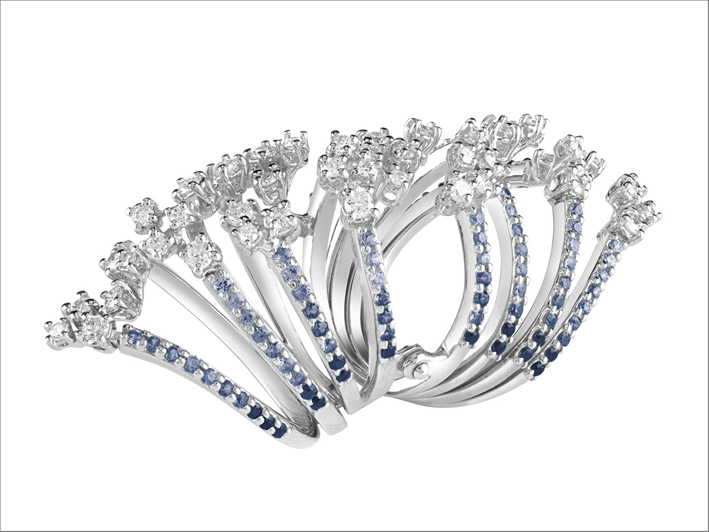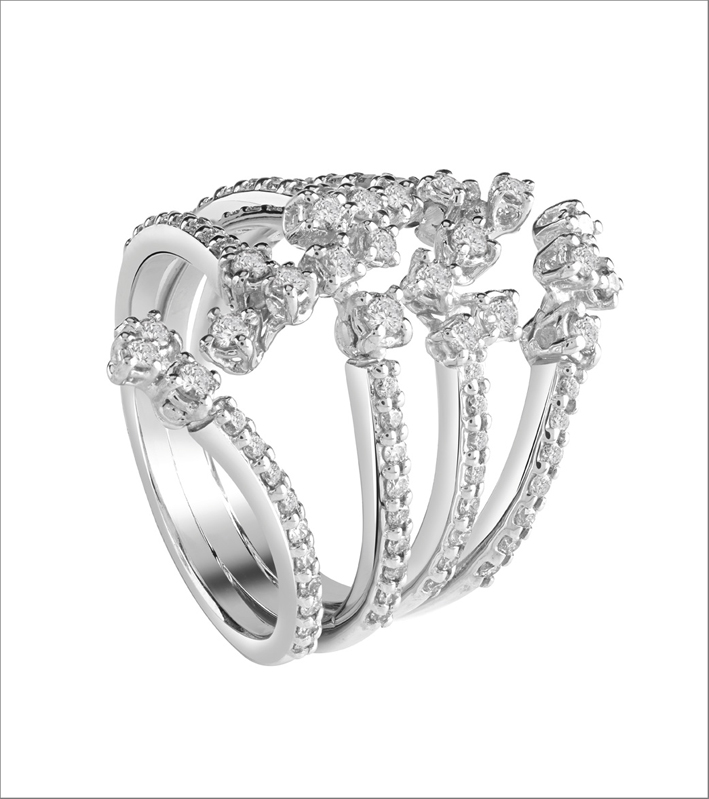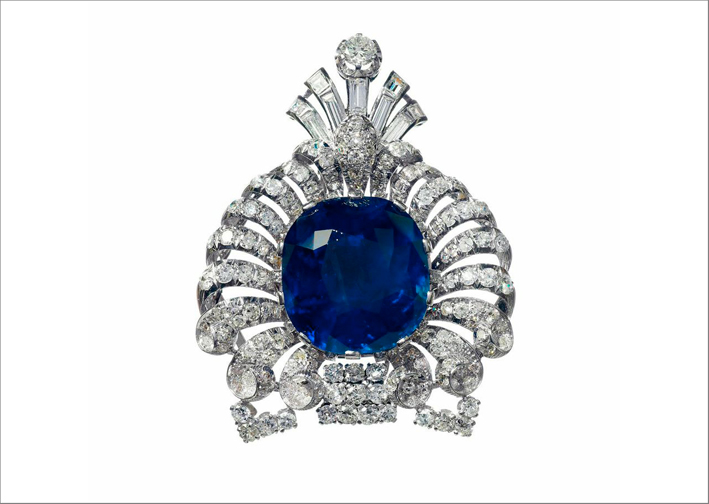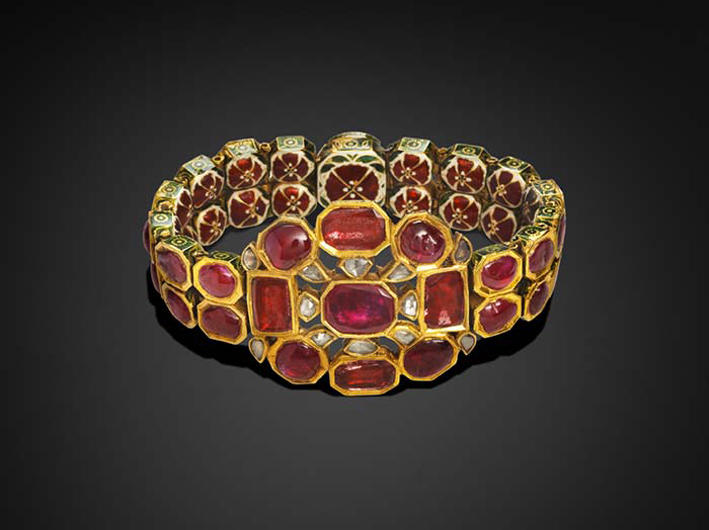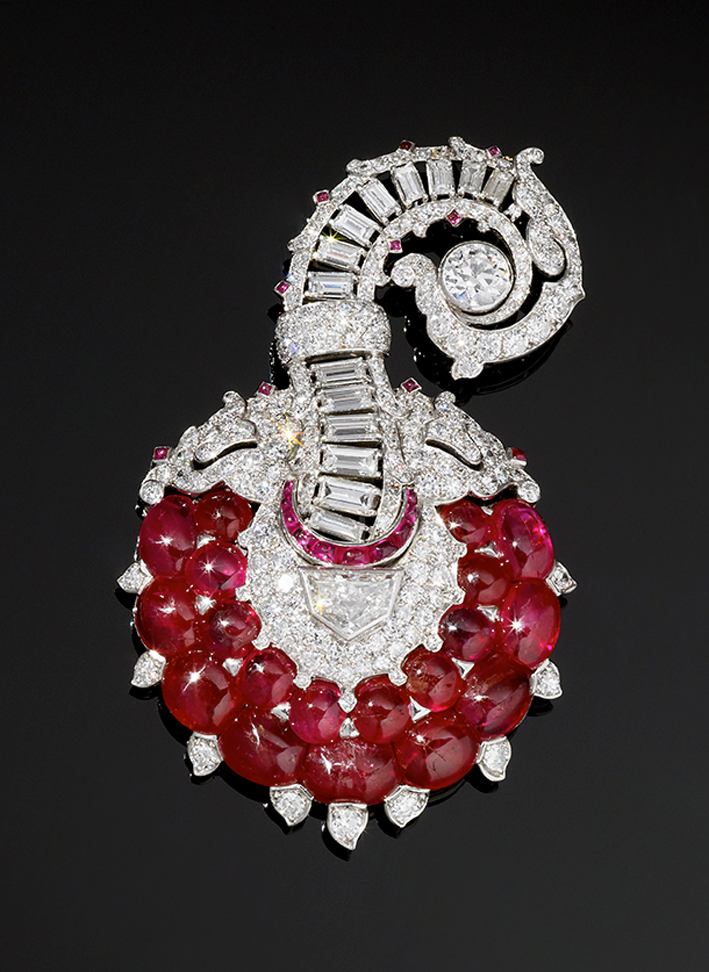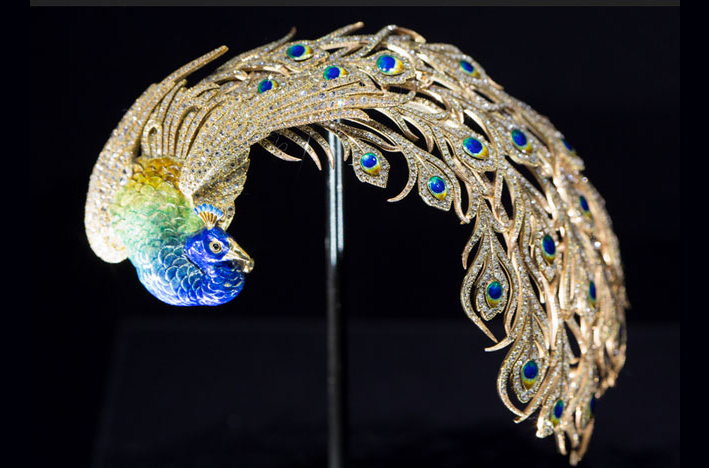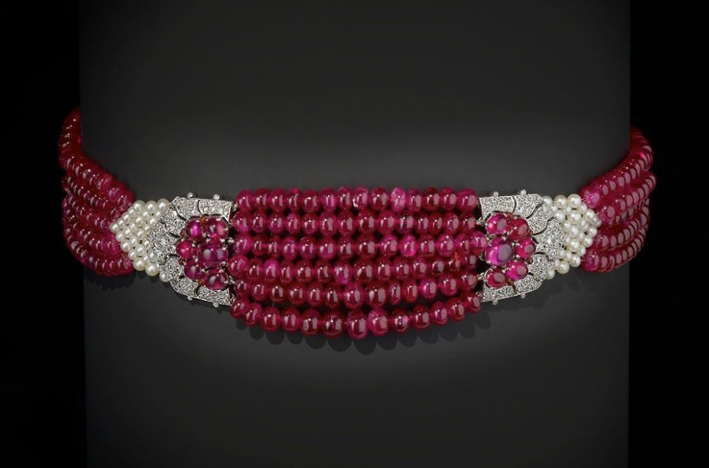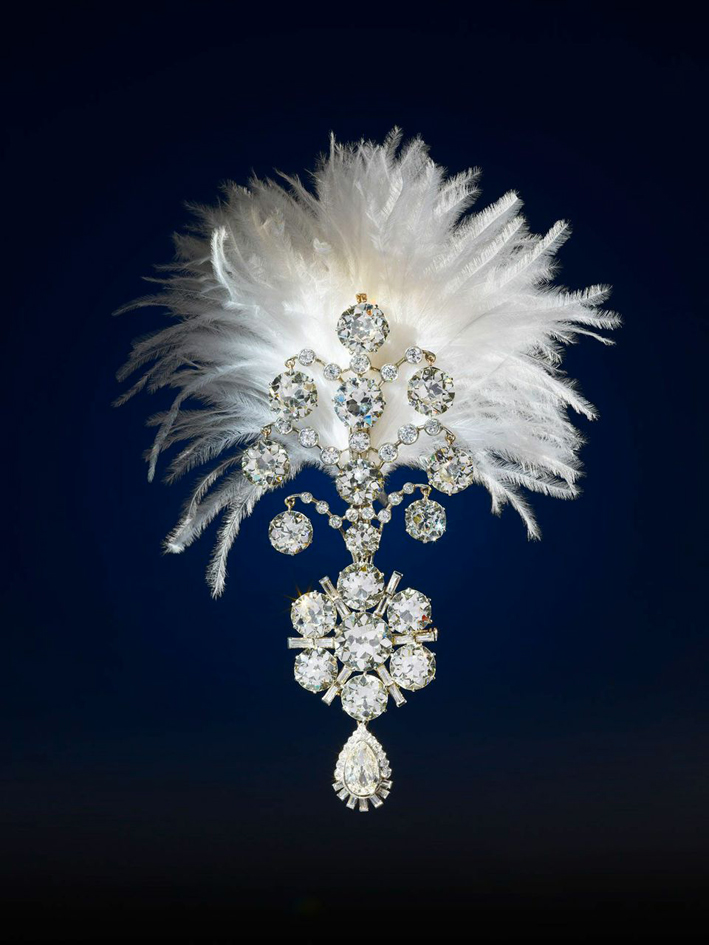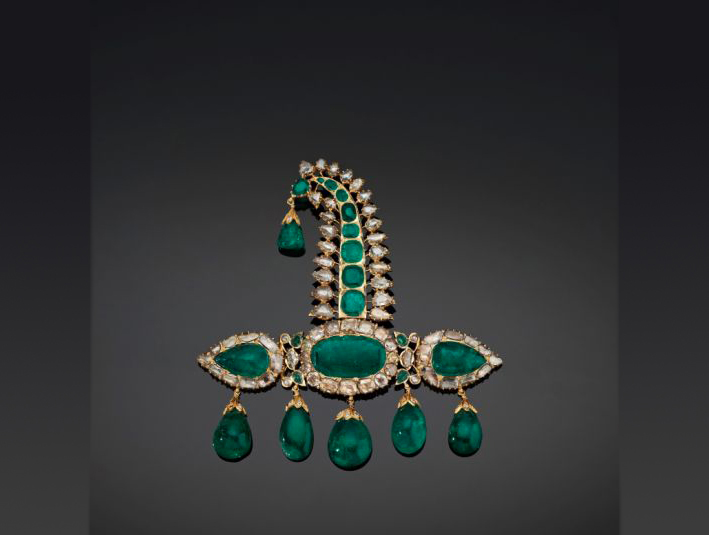Tomorrow’s jewelery of India is the same as yesterday’s India: the opulent jewelry by Sabyasachi ♦ ︎
“Ethnic wear for the global nomad”. Wear robe-related clothes in an increasingly global and moving world. Prophet of this wisdom is Sabyasachi Mukherjee, Indian fashion designer, of Kolkata. His collections of clothes give that opulence that is admired in old prints or vintage photographs: embroidered, baroque, rich fabrics. But it would be wrong to consider it as a simple stylist. He is, instead, a man of multiple interests as well as a designer. From food to culture, from movie (Bollywood) to literature: Sabyasachi is a sort of Renaissance character in Indian interpretation.
In 2008, the designer widened his work on jewelery.
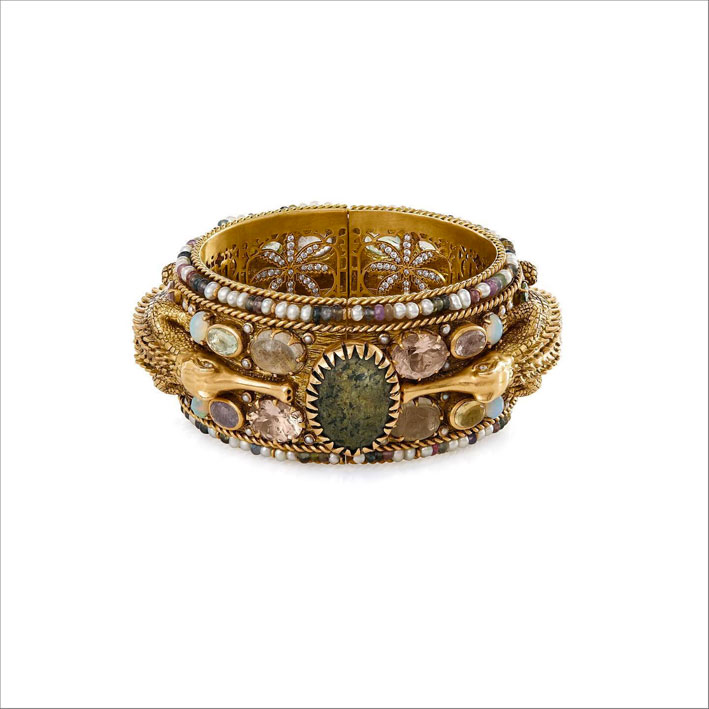
An example of his jewelery is the Mangrove bracelet, made in homage to the great Indian artisan tradition and to the various species of endangered trees found along the Ganges and in the mangroves of the Sundarbans. The bracelet has hand-engraved details and is made of 18k gold with multi-colored gemstones and diamonds. The back is studded with EF VVS VS graded diamonds.

But not fashion-jewelry, that is, jewelery produced in series, made with cheap materials and with embossed the brand. The collections of Sabyasachi are inspired by deep and precious India, rich in stones like diamonds and emeralds, but cut in a traditional way or, better, not cut with classic faceted shapes. Polki diamonds, like those used by the maharajas of a time, sewn on robes of nobles during the Moghul dynasty. In short, just look at these images (spread on Instagram) to make a dip in the depths of India’s most traditional. “Growing up, I spent hours digging in my mother’s and grandmother’s jewelery lockers. Their taste was simply delicious. Perhaps, that’s why I’m disappointed: where did all this art go?” So he thought about him to revive the tradition.
